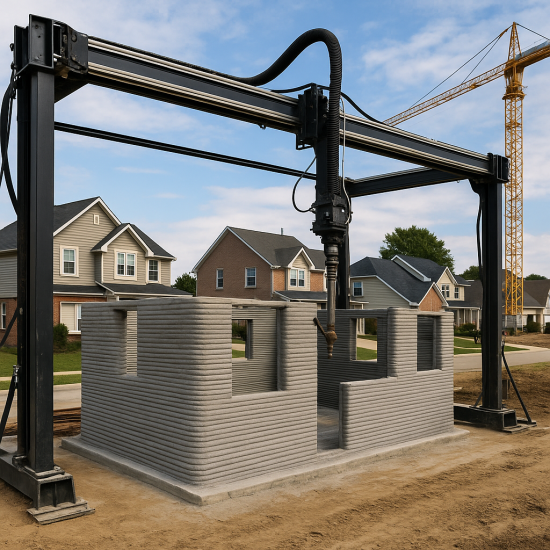3D Printed Construction: Pioneering Sustainable Building in 2025

Imagine constructing homes and buildings faster, cheaper, and with significantly less environmental impact. This scenario isn’t futuristic dreaming—it’s today’s reality with 3D printed construction. Already reshaping construction innovation, this cutting-edge technology is redefining sustainability and efficiency on job sites globally.
The Emerging Revolution: 3D Printed Construction
3D printed construction employs industrial automation and specialized materials to build structural elements layer by layer. Robots and automated equipment precisely deposit concrete or composites, guided by digital blueprints generated from sophisticated modeling software. This integration reduces human error, ensures precision, and delivers structures swiftly and sustainably.
Initially showcased in small-scale prototypes, 3D printing now regularly tackles entire buildings. Dubai famously printed an entire office building, a milestone demonstrating practicality and scalability (Forbes, 2025).
Benefits and Challenges
Advantages:
- Speed: Projects using 3D printed construction complete up to 50% faster, dramatically accelerating timelines.
- Waste Reduction: Traditional methods generate about 30% of global waste; 3D printing cuts this drastically by using exact material quantities.
- Sustainability: Enhanced precision and minimized waste directly support sustainability goals, including lower emissions and reduced environmental footprint.
Challenges:
- Initial Costs: Significant upfront investment in machinery, software, and training.
- Material Limitations: Not all construction materials are suitable for 3D printing, constraining design possibilities.
- Regulatory Hurdles: Building codes and safety standards struggle to keep pace with technological advances, posing barriers to adoption.
Field Applications & Case Studies
Case Study: The Mighty Buildings Project, California
Mighty Buildings in California successfully 3D printed a sustainable community comprising multiple residential homes. Using proprietary concrete-like materials, the project delivered fully certified, energy-efficient housing units in record time, illustrating significant cost savings and a substantial reduction in carbon emissions (Autodesk, 2025).
| Factor | Traditional Build | 3D Printed Build |
|---|---|---|
| Construction Time | 180 days | 90 days |
| Material Waste | 15-20% | 2-5% |
| Carbon Emissions | High | Significantly Lower |
“This technology isn’t just reshaping buildings; it’s reshaping the entire industry and its environmental impact,” said Marcus Lee, Senior Project Engineer at Mighty Buildings.
Future Outlook: Innovations and Trends
Looking ahead, several emerging trends promise to propel 3D printed construction into mainstream practice:
- Enhanced Materials: The development of sustainable, bio-based materials like hempcrete and recycled composites will expand possible applications.
- AI and Robotics Integration: Leveraging artificial intelligence for precise construction and optimized material usage will become commonplace.
- Circular Economy Integration: 3D printing facilitates reuse and recycling, fitting seamlessly into circular economy principles.
Companies investing in these areas today will lead tomorrow’s construction innovation.
Conclusion
3D printed construction isn’t just an intriguing innovation—it’s the future of sustainable building. Faster builds, less waste, and substantial environmental benefits position this technology as essential for modern construction.
Have you implemented 3D printed construction in your projects yet? We’d love to hear your experiences and insights—share your thoughts below!
References
- Autodesk. (2025). The Future of Construction: Sustainable Practices and Innovations. Autodesk Report.
- Forbes. (2025). Dubai Unveils the Largest 3D-Printed Building Ever. Forbes Technology.
- The Hartford. (2024). 2025 Construction Industry Trends: Efficiency and Automation. Hartford Industry Insights.